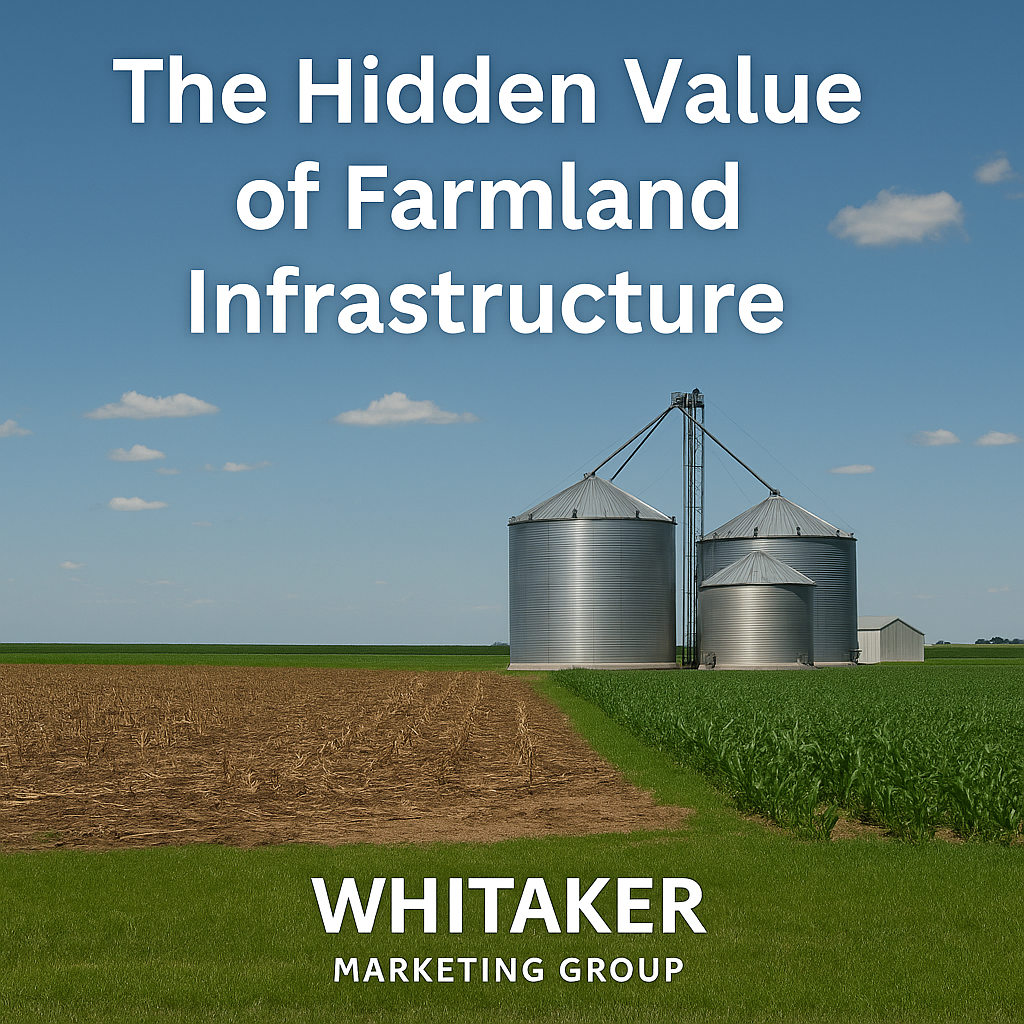When buyers evaluate farmland, they often focus first on CSR2 scores, tillable acres, and location. While those factors are critical, the infrastructure investments already in place on a farm can add significant hidden value—both in productivity and long-term returns. At Whitaker Marketing Group, we help landowners highlight these assets so that potential buyers fully understand the advantages that go beyond the soil.
Why Infrastructure Matters in Framland Value
Farmland infrastructure represents the long-term improvements that enhance efficiency, productivity, and operational flexibility. Features like tile drainage, grain storage, irrigation systems, fencing, and access lanes are not just conveniences—they can directly influence yields, reduce costs, and provide marketing advantages. According to the Iowa State University Extension, well-managed farmland with quality infrastructure consistently brings premium prices at auction and in private sales.
Tile Drainage: Boosting Yields and Soil Health
Tile drainage is one of the most valuable, yet often overlooked, farm investments. By improving water management, tile helps reduce compaction, prevent ponding, and increase the number of workable days in the field. Research from the USDA Agricultural Research Service shows that properly installed drainage systems can increase corn and soybean yields by 10–30% in poorly drained soils. When buyers see tiled acres, they recognize both the immediate and future return on investment.
Grain Bins: Adding Flexibility and Marketing Power
Grain bins provide more than just storage—they give farmers marketing leverage. With on-site storage, producers can avoid selling grain during harvest gluts and instead market when prices are more favorable. The National Agricultural Statistics Service (NASS) notes that commercial and on-farm storage capacity continues to be a key driver in farm profitability. For buyers, existing grain bins represent both convenience and cost savings compared to constructing new facilities.
Other Value-Adding Infrastructure
Beyond tile and bins, several other features contribute to farmland value:
Each of these components may seem minor individually, but together they create a package that can set one farm apart from another.
Maximizing Value When Selling
When preparing to sell, landowners should highlight all existing infrastructure in marketing materials. Professional photos, detailed descriptions, and accurate records of improvements help demonstrate the true return-on-investment to buyers.At Whitaker Marketing Group, we specialize in showcasing these hidden values. Whether it’s tiled acres, well-maintained bins, or field access improvements, we make sure your farm’s full story is told.
Farmland is more than just dirt—it’s a system of improvements that, when well-planned and maintained, dramatically increase productivity and value. By recognizing and showcasing the hidden value of tile, grain bins, and other infrastructure, landowners can maximize their sale price and buyers can make smarter investments. If you’re ready to discover the true value of your farmland, contact Whitaker Marketing Group today. Our team is here to provide the insights and marketing strategies that yield the best results.
515-996-5263 |✉️info@wmgauction.com